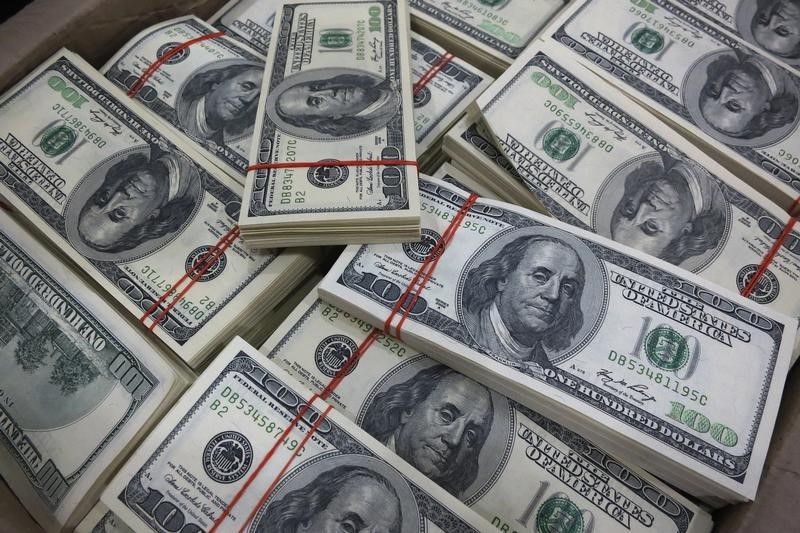Goldman Sachs chief credit strategist Lotfi Karoui departs after 18 years - Bloomberg
Investing.com - The U.S. dollar has bounced slightly after falling to its lowest level since February 2022 in the wake of the Federal Reserve’s interest rate cut earlier this week, its first this year.
The U.S. central bank cut its Fed Funds range by 25 basis points on Wednesday, and its projections pointed to the likelihood of two more reductions this year.
The Fed is navigating a difficult trade-off as inflation remains sticky while the labor market shows signs of weakness, according to analysts at BCA Research, in a note. Fed Chair Jerome Powell underscored that there is “no risk-free path” forward, emphasizing the need to balance risks on both sides of the mandate.
"This confusing macro backdrop and policy messaging was reflected in volatile price action. The U.S. dollar initially fell alongside Treasury yields, driving the DXY to a new cycle low, but reversed course during the press conference to close the day higher,” BCA said.
However, market expectations remain too dovish for 2025, with pricing implying roughly 50 bps of additional easing by year-end. Fed projections, however, suggest a much closer split, leaving room for a hawkish surprise, according to BCA’s U.S. Bond Strategist Ryan Swift.
By contrast, the Fed’s 2026 unemployment forecasts appear overly optimistic, pointing to the likelihood of deeper cuts than currently anticipated further out.
With this in mind, this mispricing sets the stage for a tactical rally in the U.S. dollar index to the 100-102 territory. Markets have leaned too heavily into a dovish Fed path for 2025, and as expectations adjust higher, the dollar should find support.
With the bar for positive U.S. data surprises set low – and stronger currencies weighing on main trading partners – the USD could increasingly benefit from even modestly positive data.
Technicals reinforce this outlook.
The U.S. Dollar Index’s failed breakdown and emerging positive momentum divergence, alongside already negative positioning and sentiment, signal scope for a bounce. Still, the move should be seen as tactical, not structural. As higher unemployment risks materialize in 2026, more aggressive easing and cyclical headwinds will cap dollar strength over the longer term.
